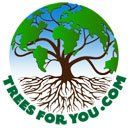2770 Summerdale Drive, Clearwater FL 33761
ISA Certified Arborists
Sarasota:
Orlando:
Pinellas:
Tampa Bay:
Palms are not as efficient as trees in assimilating nutrients from the soil and depend on the recycling of nutrients within the palm for some of the energy to facilitate new growth. Some nutrients in palms such as nitrogen, potassium and magnesium are mobile elements and can be transported from older fronds and used in the development of a new frond. When a green frond is removed from a palm the nutrients that would have been recycled are lost. Over time this can reduce the number and size of the fronds that make up the crown and even cause the trunk to decrease in diameter. The crown will appear anemic and the aesthetic qualities greatly reduced. In addition, the palm’s health will decline. What should be removed from a palm is dead or nearly dead fronds and fronds that are rubbing against structures or are interfering with people or vehicles. The flower and fruit stalks can be removed at any time.
The proper way to prune a palm is addressed in the American National Standards Institute (ANSI) A300
(Part 1) 2008-Standard Practices (Pruning) and the International Society of America’s companion publication,
Best Management Practices TREE PRUNING (Revised 2008). The ANSI pruning standards for palms state that no leaves with tips above the horizontal plane (9:00 and 3:00 positions on a clock face) should be removed. Ideally, green fronds should NOT be removed from a palm unless they are a problem.
Renowned palm researcher, Dr. Timothy K. Broschat (retired) Professor of Environmental Horticulture, University of Florida has stated that …” A properly fertilized and pruned palm…. should have a round canopy with green leaves right down to the bottom”. Palms have varying amounts of fronds in the canopy depending on species characteristics. For example, a full-grown foxtail palm may have 8 – 10 fronds while a Canary Island date palm may have 150. However, a Canary Island date palm with a potassium deficiency may only have 60 fronds. A palm with a full canopy does not increase the pruning maintenance and the palm will be healthier and look more attractive. For more information on palm pruning visit the University of Florida’s website at
ENH1182/EP443: Pruning Palms (ufl.edu) or call TreesForYou.com to have your palms pruned correctly!
Contact Details
Address: 2770 Summerdale Drive, Clearwater FL 33761


